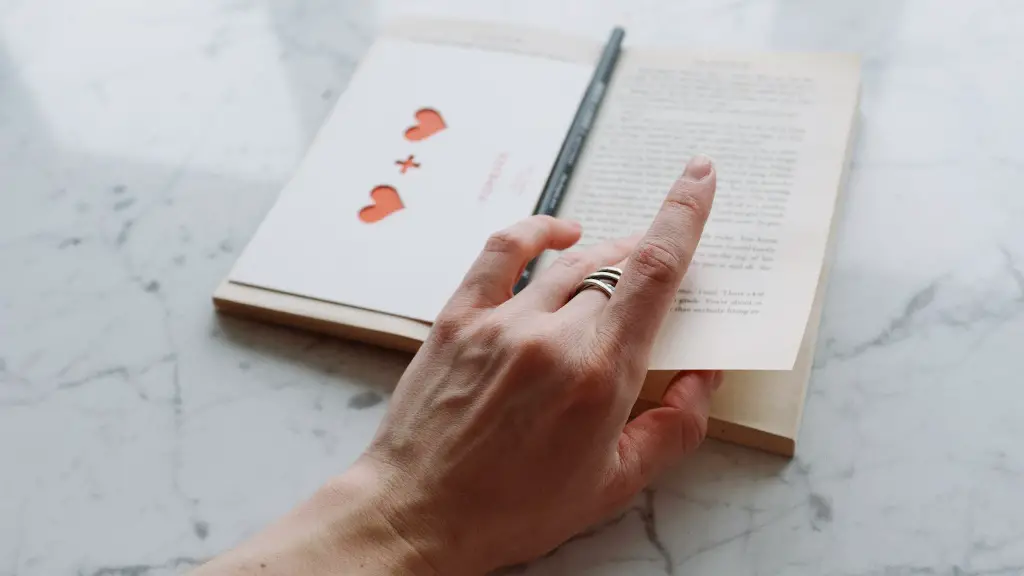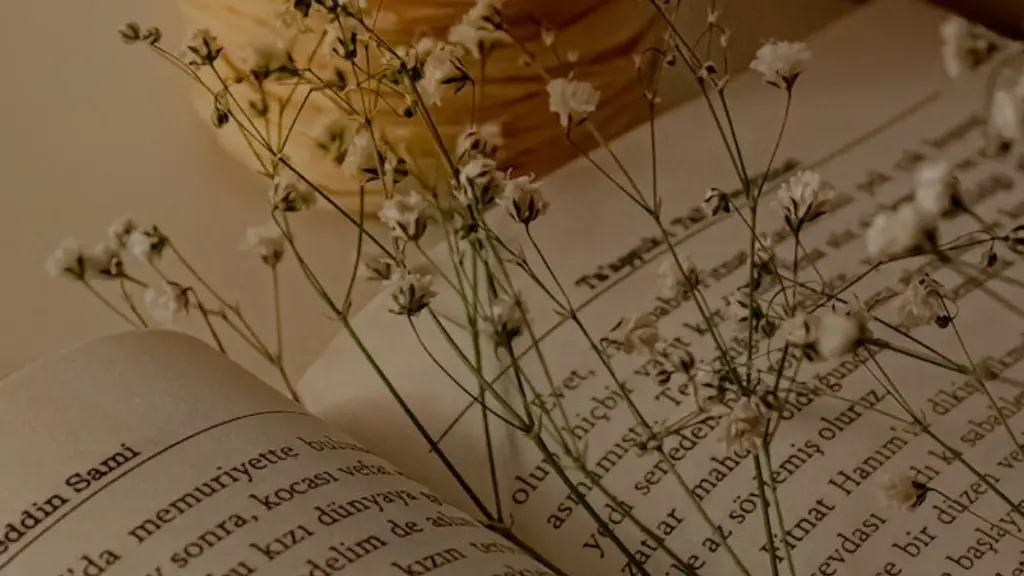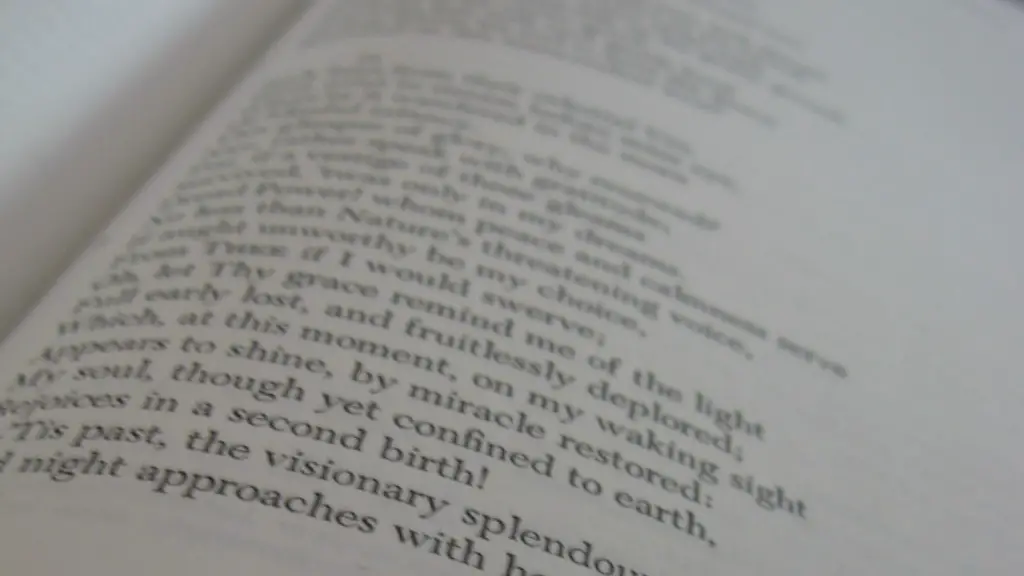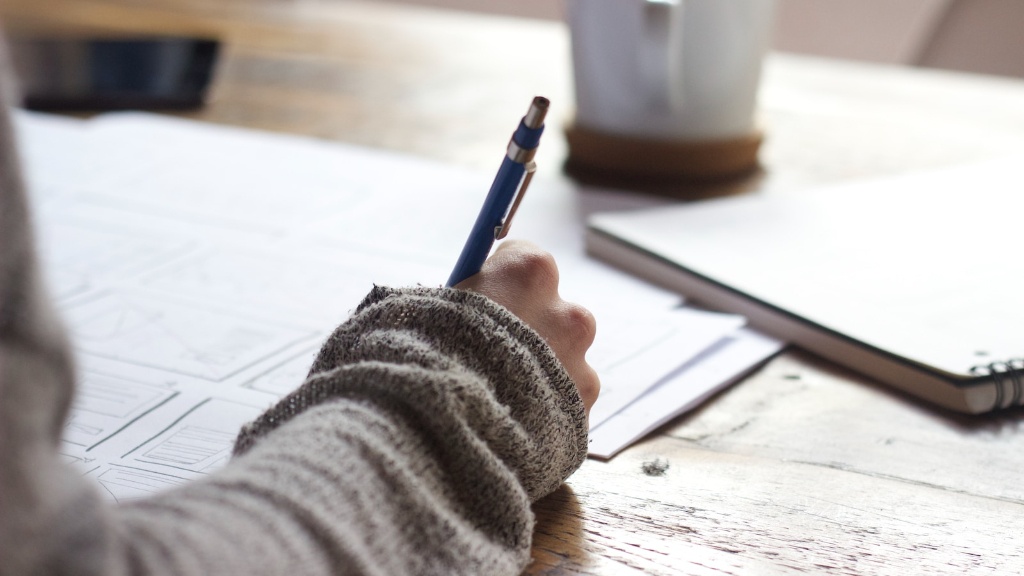Good or bad, poetry makes you feel something. That emotion could be sadness, joy, confusion, anger, or even love. Poetry has long been celebrated for its ability to capture and express intense feelings that are otherwise hard to express. But when discussing what makes poetry good or bad, there is not just one answer.
Experts argue that a good poem has a strong foundation of words and accurate usage of language, imagery, and metaphor. In most cases, the structure of a poem is also important, depending of the form and genre a poem falls into. For some, good poetry is hard to define, since it is often subjective and different for everyone.
Regardless of the argument, poetry can be very powerful. Good poetry comes alive with imagery, similes, and Metaphor. These have the power to educate, inform and engage a reader. They can evoke strong emotions, and influence the way readers feel by making connections on a deeper level. Every word matters in a poem and the order of words holds great significance.
Grammar is another key elements of good poetry. Sentences should be constructed to finesse the work and make sure it sounds correct. Using the correct expression and grammar structure can give the poetry additional weight and meaning. Good grammar allows the reader to get lost in the poetry, where bad grammar forces the reader to break mental concentration and step back from the poem. Poor grammar can kill the quality of the poem.
Emotional triggers are also important in poetry. Good poetry uses certain words and phrases to stir emotions in readers. For example, if a poet wants to evoke sadness and despair, they might use words such as “gray”, “loss” and “empty” as they have a strong connection to those specific emotions. If a poet wants to evoke joy and celebration, they might use words like “festive”, “bright” and “celebrate”.
Finally, good poetry should be structured in a way that it flows. It should link sentences and lines in a way that pieces the poem together in a seamless manner. Fluidity is necessary for the poem to be enjoyable, so the poet should avoid using too many sequencers and transitional phrases such as “firstly”, “lastly”, and “finally”.
Language
The language used in a poem is very important. It should be appropriate to the topic and have the right ‘tone’. For example, if the topic of the poem is a somber one, then the language should reflect that. Word choice is a powerful tool and can make or break the quality of a poem. Accurate vocabulary is crucial for conveying the desired message and the wording must remain consistent.
In addition to the choice of words, the writing style should also be considered. Different styles can be used to portray the different layers of meaning or emotion within the poem. For example, dialogue or an inner monologue can be used to expose the different perspectives involved in the poem. All of these tools should be used as an intentional part of the overall construction of the poem.
The level of complexity of the language also plays a part in determining the quality of a poem. While simple language can be powerful in its own way, a complex poem is often more appealing due to its intricate structure. Complex words can add sophistication and gravitas to a poem but must be used in moderation to ensure the reader is not distracted from the main message.
Rhythm and Rhyme
The structure of a poem also greatly influences its quality. Sound plays a major role in poetry and good poems have a rhythm and a flow to them. The poet should consider how the poem sounds when read aloud so the words resonate with the reader. The choice of words and the length of the lines in the poem are all important considerations in achieving the desired effect.
The use of rhyme is another important element in good poetry. Rhymes can add depth and beauty to a poem and often create a stronger connection with the reader. To achieve a good rhyme, the poet should be creative and experiment with alternative words and phrases. The use of musicality and sound should keep the poem interesting and engaging.
Although some poems are structured into specific forms such as sonnets, a good poem is not confined to any particular structure. Poetry can have a variety of forms and break the rules but should always strive to keep the reader interested.
Imagery
Good poetry often incorporates visual images to evoke a deeper meaning. The use of descriptive language can help to paint pictures in the reader’s mind and give the poem another level of complexity. The imagery should be vibrant and detailed, without being overly flowery.
In a poem, the choice of imagery can be used to emphasize certain points or feelings. For example, a poet may use the imagery of a night sky to express feelings of loneliness and isolation. The use of the night sky is a powerful visual image that can help the reader better understand the poet’s intent.
Similarly, imagery can also be used to create an atmosphere or mood in a poem. This could be done through the use of metaphors, similes, and allusions. The poet must be careful not to overdo the imagery, as it can make the poem seem contrived.
Emotions
Good poetry should be a reflection of the emotion, sentiment, and sentimentality felt by the poet. Poetry that is emotionless or lacks sentimentality often fails to evoke any response in the reader. The poet must find the right balance between emotion and intellect and write in a way that readers can relate to.
Poetry is often expressions of the emotions of the poet and as a result, good poetry can often be emotionally charged. By writing from the heart, the poet can capture an emotion that the reader can relate to on a personal level. Through the use of symbolism and metaphor, the poet can evoke strong emotions in the reader’s mind.
For example, a poet might use the metaphor of a fire to symbolize love. The imagery of a burning flame will have a strong emotional impact on a reader and can be used to evoke strong emotions of love and longing. Again, the poet must be careful not to overuse this technique, as it can make the poem seem false or contrived.
Connections
A good poem often connects the readers to the emotions being experienced by the poet. This can be done through the use of vivid imagery, powerful emotions, and a strong element of storytelling. By connecting the reader to the poet’s emotion, the poem can take on an even deeper meaning.
The way the poem is constructed and the words that are used are all important tools for achieving this goal. A poet must be conscious of the fact that their words and the way they structure their poem will determine the level of connection readers will have with the poem. The poet should be mindful of using big words and complex structures that may complicate the poem.
Additionally, the way the poem progresses is also important, as readers should have a sense of momentum that pushes the poem forward. Good poems allow readers to get lost in the poem and make their own connections to the poet’s emotion. By engaging the reader in this way, a poem can be powerful and effective.





